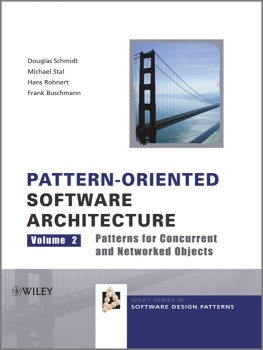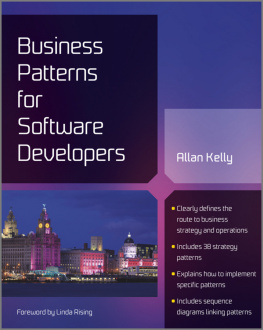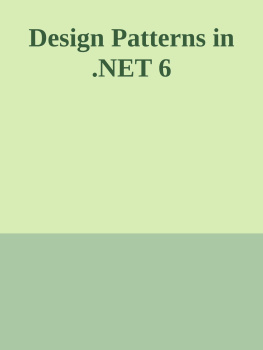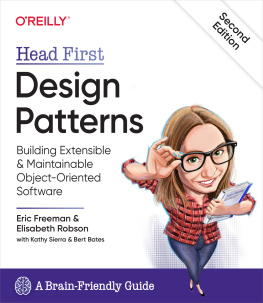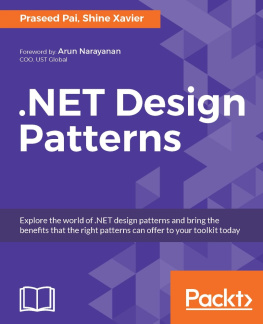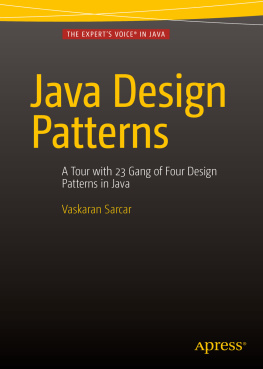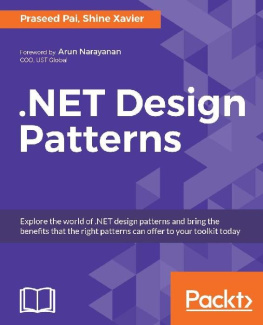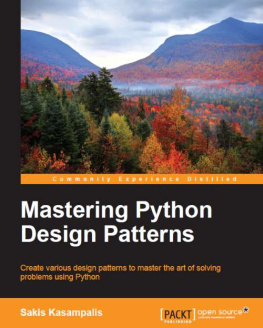Patterns for Concurrent and Networked Objects
Service Access and Configuration Patterns
The Wrapper Facade design pattern (47) encapsulates the functions and data provided by existing non-object-oriented APIs within more concise, robust, portable, maintainable, and cohesive object-oriented class interfaces.
The Component Configurator design pattern (75) allows an application to link and unlink its component implementations at run-time without having to modify, recompile, or statically relink the application. Component Configurator further supports the reconfiguration of components into different application processes without having to shut down and re-start running processes.
The Interceptor architectural pattern (109) allows services to be added transparently to a framework and triggered automatically when certain events occur.
The Extension Interface design pattern (141) allows multiple interfaces to be exported by a component, to prevent bloating of interfaces and breaking of client code when developers extend or modify the functionality of the component.
Event Handling Patterns
The Reactor architectural pattern (179) allows event-driven applications to demultiplex and dispatch service requests that are delivered to an application from one or more clients.
The Proactor architectural pattern (215) allows event-driven applications to efficiently demultiplex and dispatch service requests triggered by the completion of asynchronous operations, to achieve the performance benefits of concurrency without incurring certain of its liabilities.
The Asynchronous Completion Token design pattern (261) allows an application to demultiplex and process efficiently the responses of asynchronous operations it invokes on services.
The Acceptor-Connector design pattern (285) decouples the connection and initialization of cooperating peer services in a networked system from the processing performed by the peer services after they are connected and initialized.
Synchronization Patterns
The Scoped Locking C++ idiom (325) ensures that a lock is acquired when control enters a scope and released automatically when control leaves the scope, regardless of the return path from the scope.
The Strategized Locking design pattern (333) parameterizes synchronization mechanisms that protect a components critical sections from concurrent access.
The Thread-Safe Interface design pattern (345) minimizes locking overhead and ensures that intra-component method calls do not incur self-deadlock by trying to reacquire a lock that is held by the component already.
The Double-Checked Locking Optimization design pattern (353) reduces contention and synchronization overhead whenever critical sections of code must acquire locks in a thread-safe manner just once during program execution.
Concurrency Patterns
The Active Object design pattern (369) decouples method execution from method invocation to enhance concurrency and simplify synchronized access to objects that reside in their own threads of control.
The Monitor Object design pattern (399) synchronizes concurrent method execution to ensure that only one method at a time runs within an object. It also allows an objects methods to cooperatively schedule their execution sequences.
The Half-Sync/Half-Async architectural pattern (423) decouples asynchronous and synchronous service processing in concurrent systems, to simplify programming without unduly reducing performance. The pattern introduces two intercommunicating layers, one for asynchronous and one for synchronous service processing.
The Leader/Followers architectural pattern (447)provides an efficient concurrency model where multiple threads take turns sharing a set of event sources in order to detect, demultiplex, dispatch, and process service requests that occur on the event sources.
The Thread-Specific Storage design pattern (475) allows multiple threads to use one logically global access point to retrieve an object that is local to a thread, without incurring locking overhead on each object access.
Copyright 2000 by John Wiley & Sons, Ltd, The Atrium, Southern Gate, Chichester, West Sussex PO19 8SQ, England
Telephone (+44) 1243 779777
Email (for orders and customer service enquiries):
Visit our Home Page www.wileyeurope.com or www.wiley.com
Reprinted with corrections April 2001 and April 2004, August 2005, January 2006, June 2006, April 2007, January 2008, October 2008
All Rights Reserved. No part of this publication may be reproduced, stored in a retrieval system or transmitted in any form or by any means, electronic, mechanical, photocopying, recording, scanning or otherwise, except under the terms of the Copyright, Designs and Patents Act 1988 or under the terms of a licence issued by the Copyright Licensing Agency Ltd, 90 Tottenham Court Road, London W1T 4LP, UK, without the permission in writing of the Publisher. Requests to the Publisher should be addressed to the Permissions Department, John Wiley & Sons Ltd, The Atrium, Southern Gate, Chichester, West Sussex PO19 8SQ, England, or emailed to , or faxed to (+44) 1243 770620.
This publication is designed to provide accurate and authoritative information in regard to the subject matter covered. It is sold on the understanding that the Publisher is not engaged in rendering professional services. If professional advice or other expert assistance is required, the services of a competent professional should be sought.
Other Wiley Editorial Offices
John Wiley & Sons Inc., 111 River Street, Hoboken, NJ 07030, USA
Jossey-Bass, 989 Market Street, San Francisco, CA 94103-1741, USA
Wiley-VCH Verlag GmbH, Boschstr. 12, D-69469 Weinheim, Germany
John Wiley & Sons Australia Ltd, 33 Park Road, Milton, Queensland 4064, Australia
John Wiley & Sons (Asia) Pte Ltd, 2 Clementi Loop #02-01, Jin Xing Distripark, Singapore 129809
John Wiley & Sons (Canada) Ltd, 22 Worcester Road, Etobicoke, Ontario M9W 1L1
Wiley also publishes its books in a variety of electronic formats. Some content that appears in print may not be available in electronic books.
British Library Cataloguing in Publication Data
A catalogue record for this book is available from the British Library
ISBN 978-0-471-60695-6 (hbk)
For Sonja, Mom, and Dad
Douglas C. Schmidt
For Gisela
Michael Stal
For Regine, Anja, Sandro, and Nicolas
Hans Rohnert
For Beb and Martina
Frank Buschmann
Beb, July 3, 1999
Foreword
Middleware is the set of services, protocols, and support utilities providing the plumbing that makes modern distributed systems and applications possiblethe infrastructure that underlies web services, distributed objects, collaborative applications, e-commerce systems, and other important platforms. Not long ago, the term middleware was rarely heard, and middleware developers were rarer still. But over the past decade, the term, the research and practice, and its impact have become ubiquitous. Yet, until now, there has not been a book describing how to construct networked and concurrent object-oriented (OO) middleware, so its design has remained something of a black art. This book demystifies middleware construction, replacing the need to have an expert looking over your shoulder with well-reasoned, empirically-guided accounts of common design problems, forces, successful solutions, and consequences.

